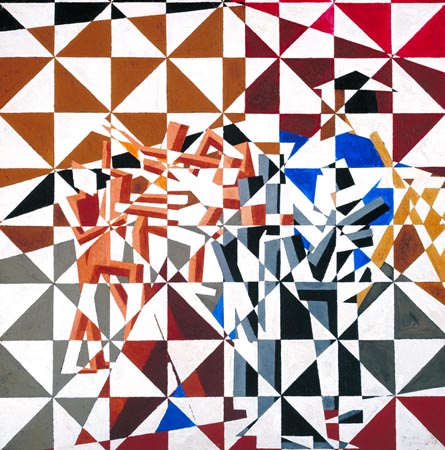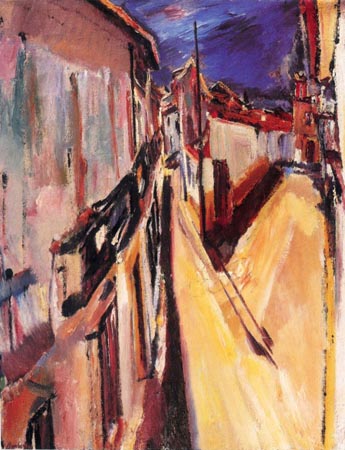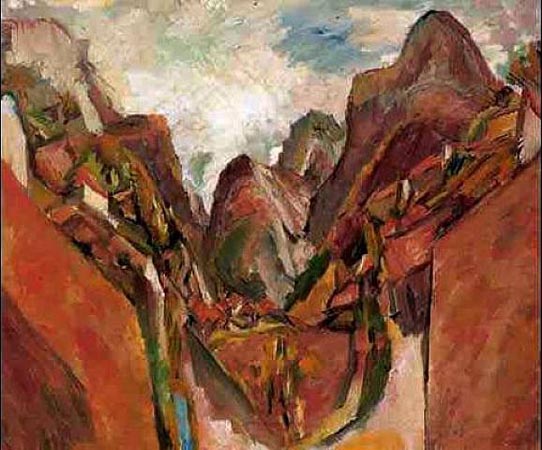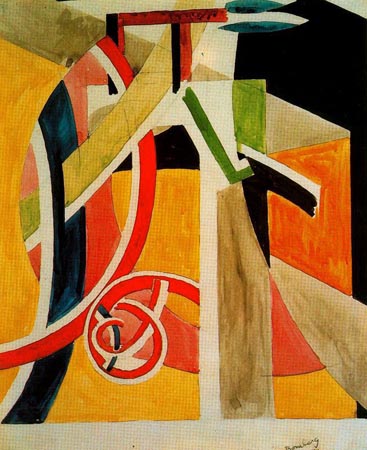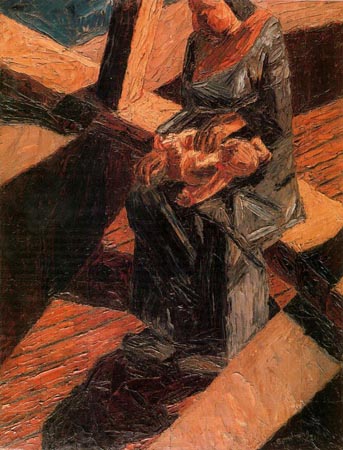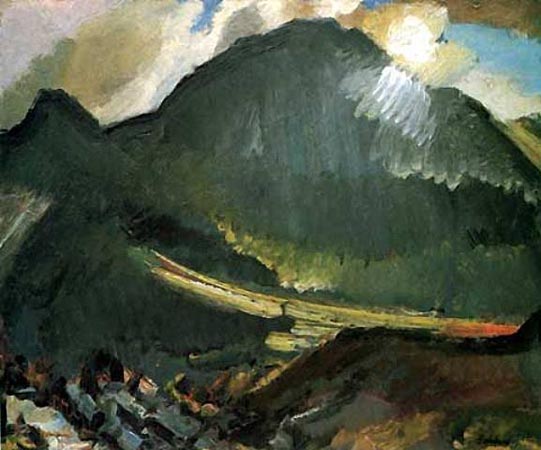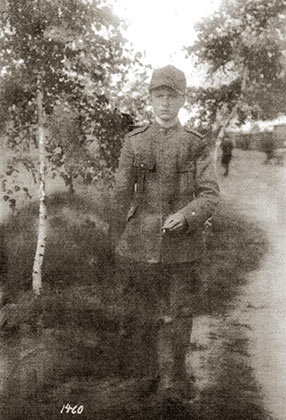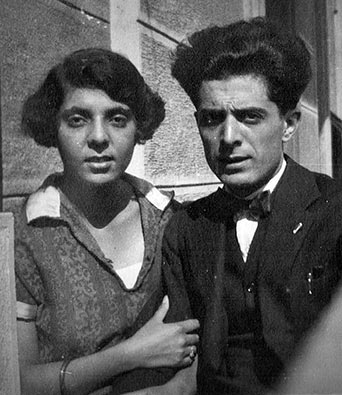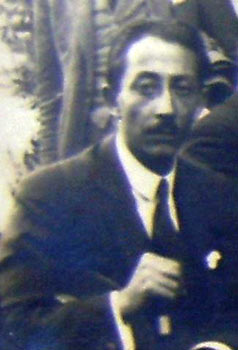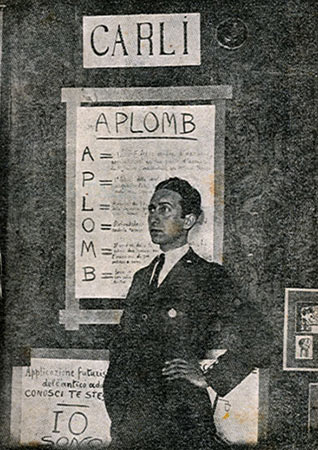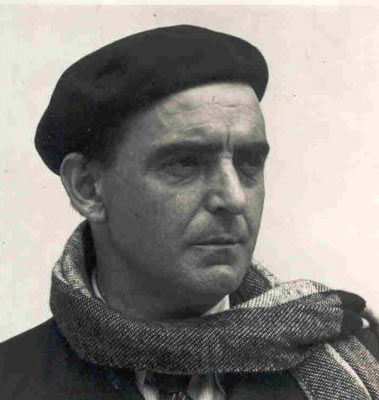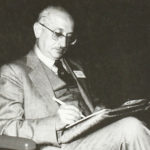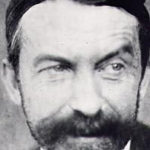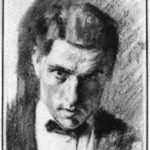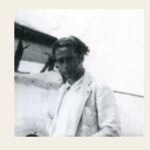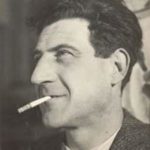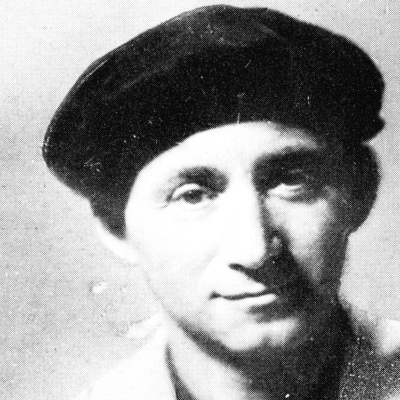
Bomberg David
(English)
David Garshen Bomberg (5 December 1890 – 19 August 1957) was a British painter, and one of the Whitechapel Boys.
Bomberg was one of the most audacious of the exceptional generation of artists who studied at the Slade School of Art under Henry Tonks, and which included Mark Gertler, Stanley Spencer, C.R.W. Nevinson and Dora Carrington. Bomberg painted a series of complex geometric compositions combining the influences of cubism and futurism in the years immediately preceding World War I; typically using a limited number of striking colours, turning humans into simple, angular shapes, and sometimes overlaying the whole painting a strong grid-work colouring scheme. He was expelled from the Slade School of Art in 1913, with agreement between the senior teachers Tonks, Frederick Brown and Philip Wilson Steer, because of the audacity of his breach from the conventional approach of that time.
Whether because his faith in the machine age had been shattered by his experiences as a private soldier in the trenches or because of the pervasive retrogressive attitude towards modernism in Britain Bomberg moved to a more figurative style in the 1920s and his work became increasingly dominated by portraits and landscapes drawn from nature. Gradually developing a more expressionist technique, he travelled widely through the Middle East and Europe.
From 1945 to 1953, he worked as a teacher at Borough Polytechnic (now London South Bank University) in London, where his pupils included Frank Auerbach, Leon Kossoff, Philip Holmes, Cliff Holden, Edna Mann, Dorothy Mead, Gustav Metzger, Dennis Creffield, Cecil Bailey and Miles Richmond. David Bomberg House, one of the student halls of residences at London South Bank University, is named in his honour. He was married to landscape painter Lilian Holt.
(Spanish)
Birmingham 1890 – Londres 1957. Pintor ligado a los movimientos de vanguardia británicos, David Bomberg estudió en el City and Guilds Institute desde 1905 y a partir de 1908 en la Westminster Art School con Walter Sickert. Con la intercesión de John Singer Sargent y la ayuda de la Jewish Education Aid Society, continuó sus
estudios en 1911 en la Slade School of Art. Gracias a las exposiciones de arte contemporáneo que se celebraban en Londres y a un viaje a París durante 1913 en el que, entre otros, conoció a Picasso y Modigliani, Bomberg comenzó a asimilar las nuevas ideas experimentales que se estaban gestando en el continente. Su arte se volvió angular y trabó conocimiento con Wyndham Lewis, cuya obra había evolucionado en el mismo sentido. Sin embargo, a pesar de que su interés por el mundo industrial y su estilo lo conectaban con los miembros del movimiento vorticista, se resistió a ser uno de ellos.
Expuso como artista invitado en la Vorticist Exhibition de 1915, pero no aceptó que se reprodujesen sus obras en la revista Blast.
En junio de 1914 la Chenil Gallery organizó una exposición individual de su obra que fue un éxito de crítica y atrajo el interés de artistas jóvenes de vanguardia. Esta situación se vio interrumpida con el estallido de la Primera Guerra Mundial y tras el fin del conflicto, Bomberg volvió a la figuración, camino que ya había iniciado durante la contienda en las obras realizadas por encargo del Gobierno canadiense.
Desilusionado por el poder destructor de la máquina, por la que anteriormente se había sentido fascinado, su estilo se volvió más orgánico, lo que le separó definitivamente de Lewis. En 1923 viajó a Palestina y se dedicó a realizar paisajes de carácter casi topográfico de los lugares que visitó. Hacia el final de esta década, su estilo se volvió más expresivo en las obras que realizó durante sus numerosos viajes a Escocia y España. Si bien este cambio de estilo no fue aprobado por la crítica hasta después de su muerte, Bomberg se convirtió en un influyente profesor de la Borough Polytechnic de Londres. Frank Auerbach y Leon Kossoff fueron algunos de sus alumnos.
